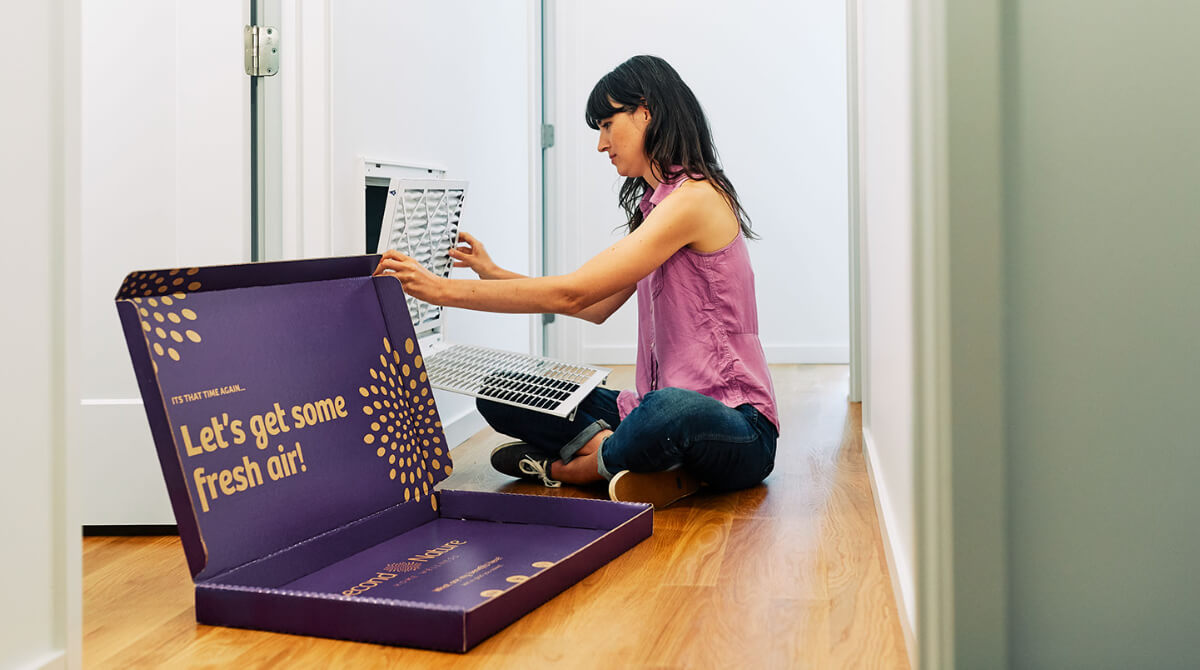An Easy How-to for Painting Your Home's Interior
A DIY paint job can be easy by following these steps. So you’re looking to do some wall painting? That’s easy enough, right? You just need to grab a brush and a can of paint and get started. Except that is not what you’re supposed to do, unless you want your paint job to come out looking like you just put paint in a water gun and shot it at the wall. A painting project, like any home improvement project you want to invest in, will turn out quite a bit better with a bit of planning and the right tools. Not sure what you need? Well, you’re on the right blog. Make sure to pick the right color. First comes the prep work, which is arguably the most essential part of painting a room. Before you even begin thinking about doing the actual painting, make sure you spend the appropriate amount of time picking your color. Have an idea of what color you want when you go to the store and bring back some samples. If possible, get more than one sample of each color, as the more surface area of the wall your sample takes up, the easier it will be to envision that color all around the room. The paint store people might not let you do that, but if they do, you should take full advantage. Once you’ve acquired your samples, tape them to the wall or ceiling you’re intending to paint and check them out in different lighting during different times of the day. This will allow you to see what each color looks like in all different types of light and give you time to mull over your options. After selecting a color, it’s time to choose the type of finish you’d want. There's no industry standard for paint. What one manufacturer may call flat could actually be matte and vice versa. Be sure to test the actual paint or do some research first. Flat: Flat paint is the anti-gloss and therefore the best option for covering imperfections in your wall. The downside is that the surface can easily get marked up and may need retouching on a more frequent basis. At the same time, flat paint is easy to touch up since you're not having to worry about blending to match the current shine. Nowadays, most flat paint will stand up to mild cleaning—just look for "washable" on the label. Matte: Matte paint results in an almost shine-free appearance—a little bit more gloss than flat paint. This finish is sometimes referred to as suede or velvet finish. Given it does have a little bit of gloss, it can handle slightly more cleaning than flat paint. Flat and matte are best suited for low traffic areas as they are easier to mark and scuff, while not being particularly easy to clean Eggshell: Eggshell paint has a light shine making it easy to clean but doesn’t have the smoothness factor that makes imperfections standout. Those two factors make eggshell finish paints very popular. Satin: Satin paint is the middle ground between matte and gloss. This level of shine really starts to highlight imperfections; this sacrifice makes it easier to clean. The more shine a paint has, the more glossy it is. As you move from the spectrum of no-shine to shiny, paint becomes easier to clean. Keep this in mind when you're painting kitchens or bathrooms where the walls have a high potential to become dirty. Semi-gloss: It's got that bright shine, but still not quite glossy. Semi-gloss is easy to clean and ideal for trim, cabinets, or doors. High-gloss: Gloss is the opposite end of the spectrum from flat. It provides the maximum shine for your wall which can be a really fresh look. But cool comes at a price. This finish will show every imperfection. Due to their durability, high-gloss paints are often used for doors in high-traffic areas and trim. What supplies you'll need to paint. Now that you’ve got your ideal color and finish selected, it’s time to acquire the appropriate tools. Paint: Painting a room without paint is tough. Paint roller: For covering large open spaces like walls, a roller is the most efficient tool. It will give you cleaner and more even strokes than a brush. Paint tray: A paint tray holds the paint for the roller. The roller and tray can typically be purchased together for about ten dollars. Painter’s Tape: Painter’s tape is a critical tool for any in-home paint job. Use it as a divider between the area you want to paint and any area you don’t. Painter’s tape goes on and peels off easily and will give you a nice clean straight edge. You can get this for about five bucks. Brush: If you don’t have painter’s tape, or you’re painting an area that has inward corners or places that a roller will struggle to reach, simply use a brush to touch up the edges. Often, a brush will come in the package with the roller and tray. Ladder (maybe): You might need a step stool or a step ladder if you can’t reach everything you want to paint. These will run you north of fifty dollars, but chances are you already have one. If you don’t, you should get one. It’ll last you your whole life and be useful in lots of home fixes. Drop cloth: A drop cloth will cover the floor and furniture so you can’t spill paint on either. Make sure you get a size big enough to cover everything around the area you’re painting. These are cheap and start at around four dollars. Wallpaper steamer (maybe): If you have wallpaper, you’ll need to remove it before you begin painting. Wallpaper steamers are expensive, often starting above $40, although you can buy used ones for a little less. Remove any wallpaper. Using your newly purchased wallpaper steamer, strip off any wallpaper and then thoroughly clean the walls to rid them of any dirt or grime that has built up. Next, clear everything around the areas you intend to paint and move it as far away as possible. Make the space as open as you can. Cover the floor and anything that couldn’t be moved with the drop cloth to protect it. After you’ve cleared the space and laid the drop cloth, tape the cloth down and then adhere painter’s tape to the edges of the area you will be painting. Now it’s time to get started. To prime or not to prime? Sometimes it’s necessary to apply a primer beforehand, and sometimes it’s not. Primer is meant for walls and places where an even and uniform coat are critical. Determining whether this step needs to be taken is done by determining whether there are elements of the wall you are painting that will cause the paint to dry unevenly. Are you painting drywall, which needs a coat of primer to avoid irregular drying due to its absorption qualities? A primer will help here. Has the wall been painted before? A previous coat of paint will carry out some of the functions of a primer and is often sufficient on its own. Is the wall damaged, warped, featuring an irregular surface, porous, or does it have nail holes? A primer is recommended in these situations to level out the surface and decrease the impact of any irregularities in the wall. In some situations, you can use a paint and primer mix, which can save you some money and make things move faster. If you decide a standalone primer is necessary, apply just like you would paint, ensure evenness, and then give it two to four hours to dry. Be positive that it is completely dry to the touch before proceeding. Let’s do that painting. Once you’ve decided to prime or not to prime and you’ve applied the coat if necessary, it’s time to bring your room to life. Dump that paint in that paint tray and get ready for action. First, you’ll use your brush to paint the corners and edges where you’ve applied your tape. Use a horizontal sweeping motion to ensure evenness and make sure every sweep is in the same direction. After you paint corners and edges, use your roller to cover the wall. Roll the roller through the tray of paint and then begin your roller stroke about three-quarters up the wall. Roll from there almost to the bottom, still leaving two or so feet between the edge and the end of your stroke. Once the paint on the roller has thinned to the point where it isn’t pooling on the foam, roll all the way to the top and bottom of the surface. This practice will help to ensure the most uniform coat possible. How many coats is too many coats? For wall painting, you’re probably going to need multiple coats. If you’re repainting, the number of coats required varies depending on the old color and the new color. A darker color over a lighter color will need probably no more than two, while a lighter color over a darker will need as many as five or six. In a situation that would require a significant number of coats, a primer might be useful in providing a blank and uniform canvas that cuts down on the workload. While you’re painting, it’s essential to keep in mind that paint will dry a slightly different color than when it’s first being applied to the wall. It often goes on a darker color than the samples you had taped to your wall. Don’t panic. It will dry the right color. After you’ve let your final coat dry, you’re ready to put your room back together and enjoy the ambiance of the freshly painted room.
 November 2, 2021
November 2, 2021
Read more

December 2, 2021

